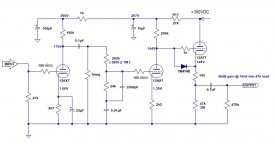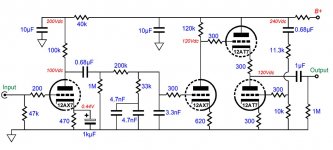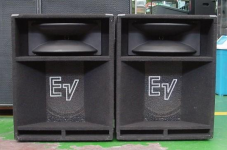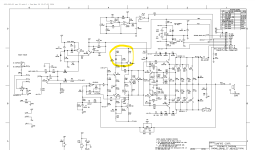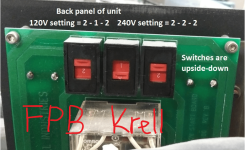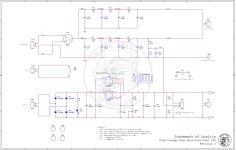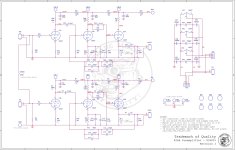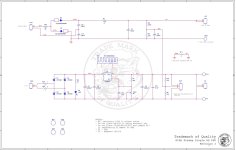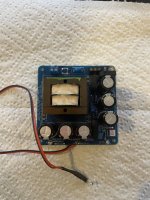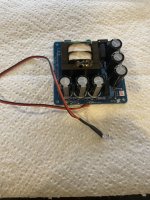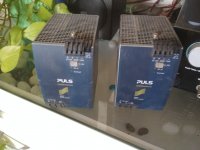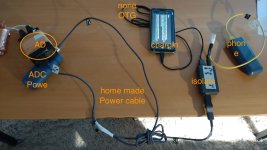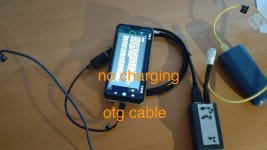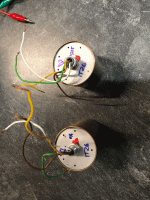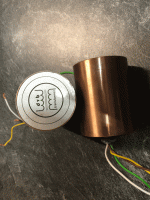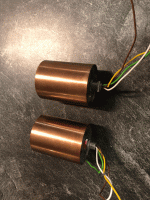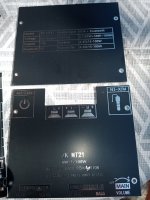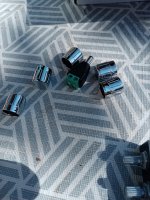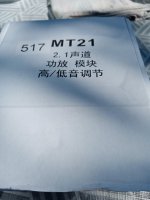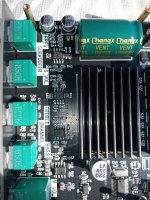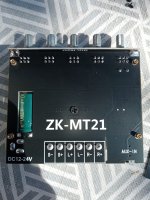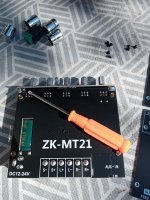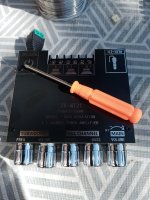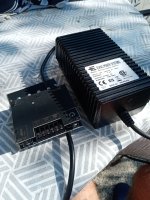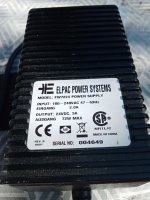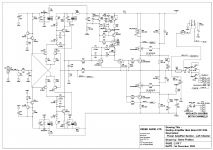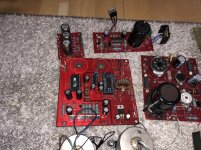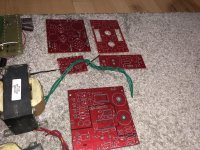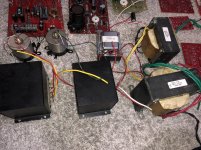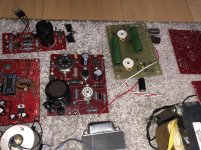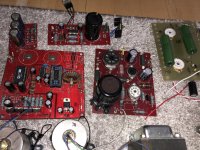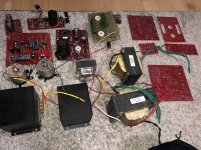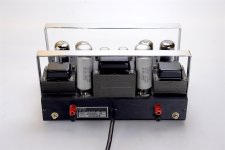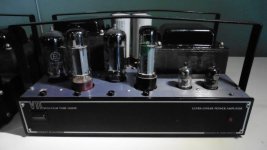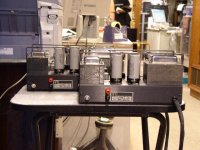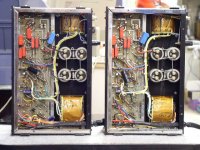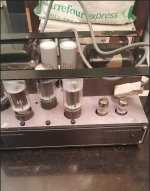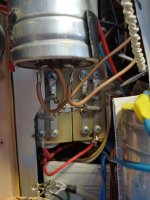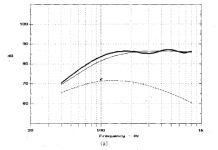In the last time I had the opportunity to examine and upgrade a Panasonic UB450. When one look at this device and know its price in shop, then one`s first thought hearing about upgrading it, is: what to upgrade to this cheap device?
Indeed, this device is a very cheap media player, meant to playback discs, streaming over the network, as playback for media files through the device USB port. The optical device is a cheap whole plastic item. Working well, but a little bit noisy. The chassis is made of a less 1mm thickness steel plate, with a cheap, whole plastic front panel. The whole device it consists of a small low-profile box.
Inside we find a small one main board, with all of necessary chips on it. A glued heatsink partially placed over the main processor as over the memory chips in central area of the board. No any analogue section for audio. Also, much unnecessary these days an such dedicated analogue audio section, when one is largely using video processors to get analogue audio quality out, or other similar solutions. A local analogue audio section it has its own advantages when about outputted quality sound, but in this case for cost effectiveness reasons, it was decided not to be implemented.
The power supply of the player is an external one, a small compact SMPS type, to be connected directly to the outlet.
Well, this cheap device, and out of the box, is indeed capable of a very good picture quality. It was my first surprise in using it. I own and use myself an UB9000. Comparing UB450 with UB9000 was very easy, and UB9000 is indeed surpassed by this new and cheap UB450. Not only similar picture quality out of the stock UB450, compared with an upgraded UB9000, but a much better user interface as well for UB450. Very fast Menu navigation. Much user-friendly interface. No hanging or freezing, as very annoying it happen in case of UB9000. Very fast loading and ready to playback for files residing on a USB stick. Lot of GB getting ready for use in around a second, while one should wait many teens of seconds for the same to happen on an UB9000. I have noted especially about the HDR functionality on this UB450. It really makes a difference, is very obvious and improving a lot the picture quality. One realises indeed what mean HDR improvement when using this UB450 device.
Initially I was myself sceptical about the results of an upgrade for a such cheap item. And what to upgrade more, for a such picture quality out of a stock UB450?
Then I proceeded to a close examination of the electronic design, firstly targeting to adapt the power supply approach for the use of an LPS. Mainly, it was about replacing the DC 12v main rail, provided by the original small SMPS box, with a linear analogue 12vDC solution. Not difficult task also.
Proceeding accordingly, and after using an improvised LPS circuit (see picture), I had another pleasant surprise. The use of a linear power supply it confirmed once more that it can improve a lot even an original high video quality. However, one cannot realise this difference, but only after an LPS it is providing power instead of an SMPS to the targeted digital circuitry or device. The difference is there, is obvious, and is pleasant. All pictures’ parameters are improved: brightness, contrast, colour, tonal range, finer details, noises level. Everything it get in fact better.
Then I decided that this upgrade is really worthy and it need an more professional approach. So, I designed an LPS which it will fit into the available place inside the small enclosure. I was initially appreciating that the heat generating by a such lower power LPS for this device, it may not represent an issue. Thinking it will be enough to dissipate the eventual heat through the metal parts around, bottom of the chassis and the tiny steel plate cover, with a passive ventilation. Well, I was enough wrong about the heat. Even low amount heat, the heatsink it could not be that big, and the dissipation effectiveness it was not good through the chassis bottom, and the cover. I improved the thermal contact, but not enough either. The inside temperature was rising against 60°C with passive ventilation. In the end I realised that the best ventilation solution is using a fan to force the air out of the small enclosure. The enclosure it was originally provided with ventilation holes, which it could be used for this forced ventilation approach. Choosing the right silent fan, powering it from an added dedicated regulator on LPS board. A large hole (fan dimension/diameter) should be carved into the bottom of the chassis, for the fan to effectively exhaust the hot air from inside, while fresh air coming through the original ventilation holes. This solution it was effective indeed, and the inside temperature went down to 45°. Reasonable result, and nothing it affected the original shape and visual aspect of the player. The fan is running fully silent, mounted on a good dumping material. I have also mounted new and higher dumping feet for the chassis.
I have placed on the LPS board also circuits for the two oscillators (upgrade) for the main processor and the video processor chip. The original clocking approach is using resonators connected to the inbuild clock generators inside the main processor and video chip. Classical cheap clocking design solution.
Well, this LPS placed inside the device enclosure it should be powered by a transformer which very obviously it has no place inside such small enclosure. An external nice and professional enclosure solution had to be adopted. HF and DC blocking filtering cells are also added to this external power solution.
For such a cheap tiny device, a such expensive LPS solution! Well, in the end I appreciated as worthy. The improvement gain in quality for picture and digital sound is remarkably high. In the end, the whole upgrade cost it exceeds by far the device selling price… However, as overall costs (device + upgrades) it still yet be lower than upgrading another type of player, as UB9000 or whatever. And the quality out of UB450, it exceeds what is possible being obtaining from a more expensive device (upgraded).
The overall conclusion: everything it worth for the final results.
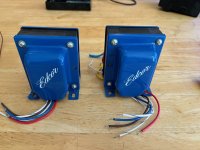
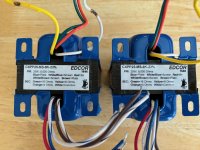
 !!!! On the plus side the 2 that I did today are quite a bit better than the first 4.
!!!! On the plus side the 2 that I did today are quite a bit better than the first 4.